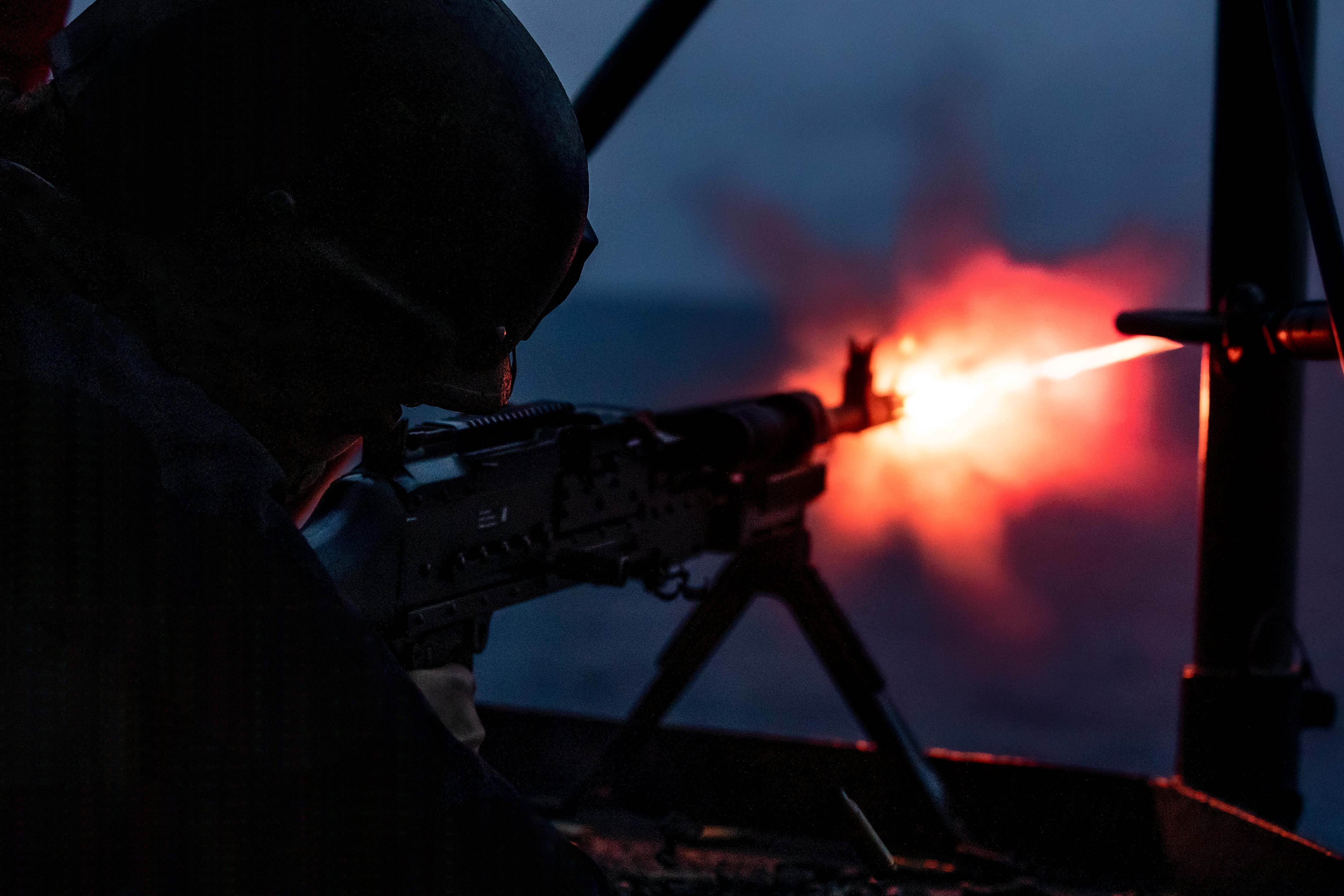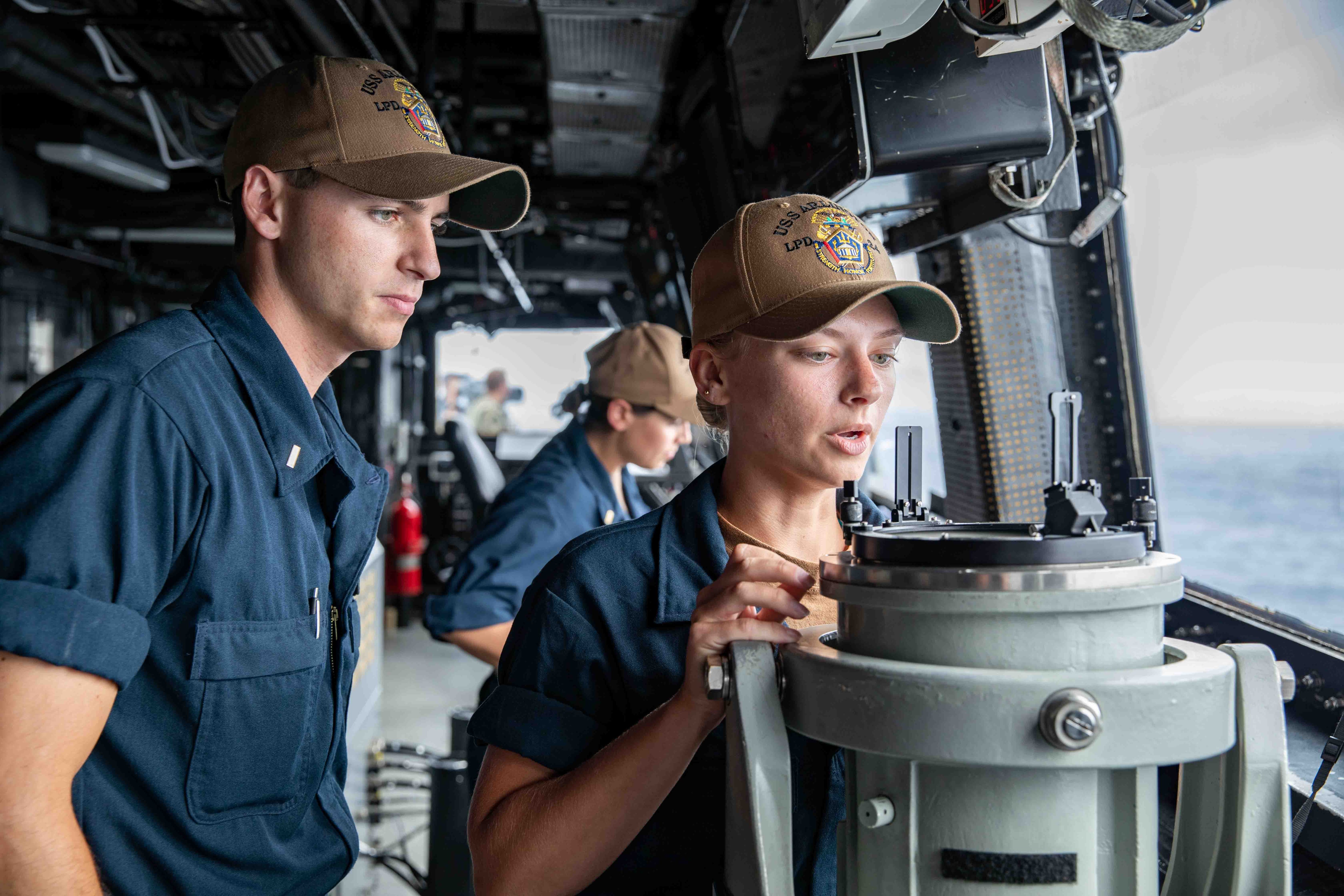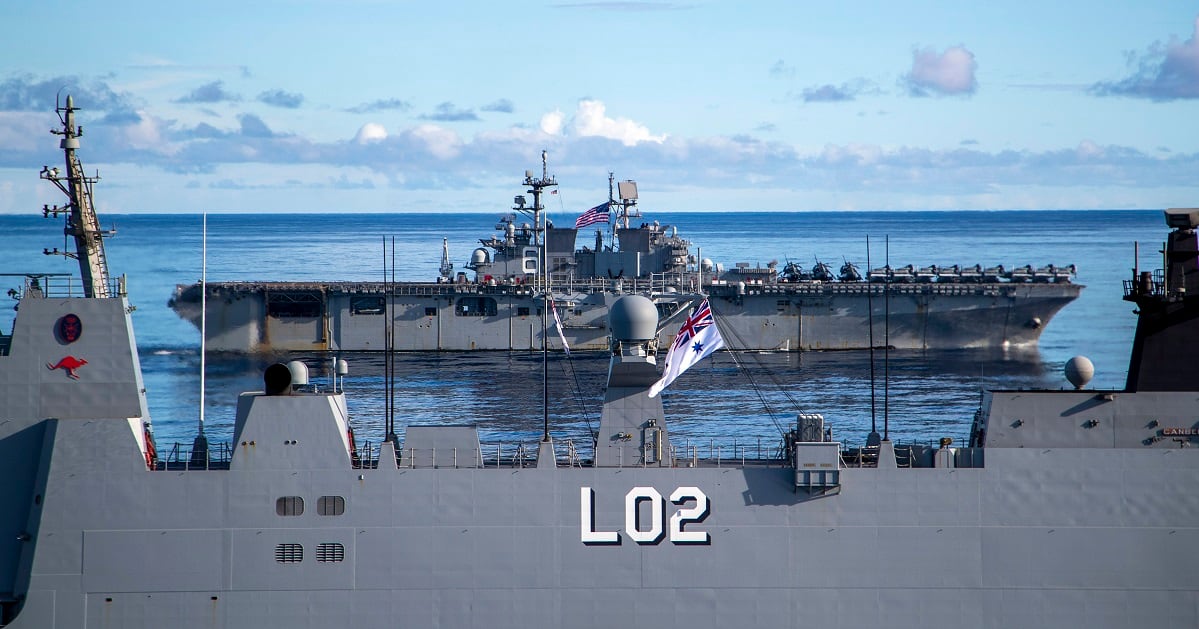The Navy and the Marine Corps are testing out modern warfighting concepts on a scale never seen before as part of Large Scale Exercise 2021, paving the way for even larger naval exercises in the future, according to Navy leaders.
Labeled the “biggest exercise we’ve done in a generation” by Chief of Naval Operations Adm. Mike Gilday, the exercise from Aug. 3 to 16 pulls together multiple elements inspired by other training events — including strike group certification exercises like Composite Unit Training, integrated live exercises like Bold Alligator, and virtual exercises like Fleet Synthetic Training — and completes them in concert as part of a single, globally integrated exercise.
“It’s unique that we have all the Navy component commanders, the four-star fleet commanders involved. It’s unique that we’re doing something on this scale, as a naval exercise with the Navy and the Marine Corps,” Rear Adm. Douglas Beal, director of Large Scale Exercise 2021, told reporters Aug. 5.
“It’s more than 25,000 folks that are all linked together, and in the same battle problem all at once,” Beal said. “The scope and scale is different than it has been in the past. But it’s necessary because we don’t get to do this every day.”
The exercise aims to demonstrate the Navy’s ability to employ precise, lethal and overwhelming force across 17 different time zones and involves approximately 36 live units and more than 50 virtual, constructive units, along with six Navy and Marine Corps component commands.
As a result, the exercise requires U.S. Fleet Forces Command, U.S. Pacific Fleet and U.S. Naval Forces Europe to take on a global focus, rather than direct attention toward individual carrier strike groups as previous exercises have done. The ultimate objective is to polish the services’ ability to “synchronize maritime operations” throughout the world, according to the Navy.
To do this, the Navy and Marine Corps are utilizing a live-virtual-constructive environment to cultivate alternative warfare concepts, including distributed maritime operations, expeditionary advanced base operations, and littoral operations in a contested environment.

The exercise pulls in ships like the guided-missile cruiser San Jacinto, which is currently pierside in Norfolk and undergoing a maintenance availability, into a virtual setting where the ship’s goal is to identify potential air threats, and if necessary, engage weapons to eradicate such threats.
“So, time is of the essence, accuracy is of the essence,” Capt. Christopher Marvin, commanding officer of the San Jacinto, told reporters. “There is a myriad of information that’s either presented or not presented. So, every time a trap pops up there that you don’t know about, I like to say … it’s a mystery that has to be solved, and the clock is running.”
While the exercise scenario was written in advance, it shifts based on the decisions commanders make throughout the exercise in order to accomplish daily objectives. Assessment teams also provide reporting and feedback so commanders can modify accordingly.
Beal declined to elaborate on the specifics of the scenario sailors and Marines are facing, but noted that the scenario employs diplomatic and economic instruments to accompany military components.
“It’s a global scenario, it’s a worldwide scenario, and it builds up and then we end up in some sort of a crisis or in some sort of a fight,” Beal said. “Then we’ll call a stop to it, and figure out what we’ve learned.”
As a result, the overall goal of the exercise is to understand new warfighting concepts that are not fully refined — such as distributed maritime operations and expeditionary advanced base operations — and understand what these concepts mean for the fleet, according to Marine Corps Col. Nicholas Nuzzo, deputy exercise director.
“Although there will be training value, this exercise is about validating, refining, testing warfighting concepts,” Nuzzo told reporters.
While elements of the exercise have been tested on a smaller scale, Large Scale Exercise incorporates those components on a grander scale than previously seen, Nuzzo said.

Likewise, the Large Scale Exercise is designed to discover new elements that stem from concepts like littoral operations in a contested environment, expeditionary advanced base operations and distributed maritime operations, Beal said.
“Each one of those three things has many discrete capabilities that lie underneath them,” Beal said. “This is an opportunity to exercise those capabilities and, by the way, test some new ones; figure out what works, what doesn’t work, and how we integrate that into the way we fight our wars in the future.”

Beal said the exercise will be repeated regularly every three years from now on. Once lessons are learned from one exercise, future exercises will provide opportunities to correct course and adapt concepts to real-world experiences, Beal said.
John Hefti, director of fleet and joint training at Fleet Forces Command, added that the scale and scope will likely increase over the years, and also include joint partners and allies.
“We’ll do this on a regular drumbeat,” Beal said. “There’s no question about that.”




